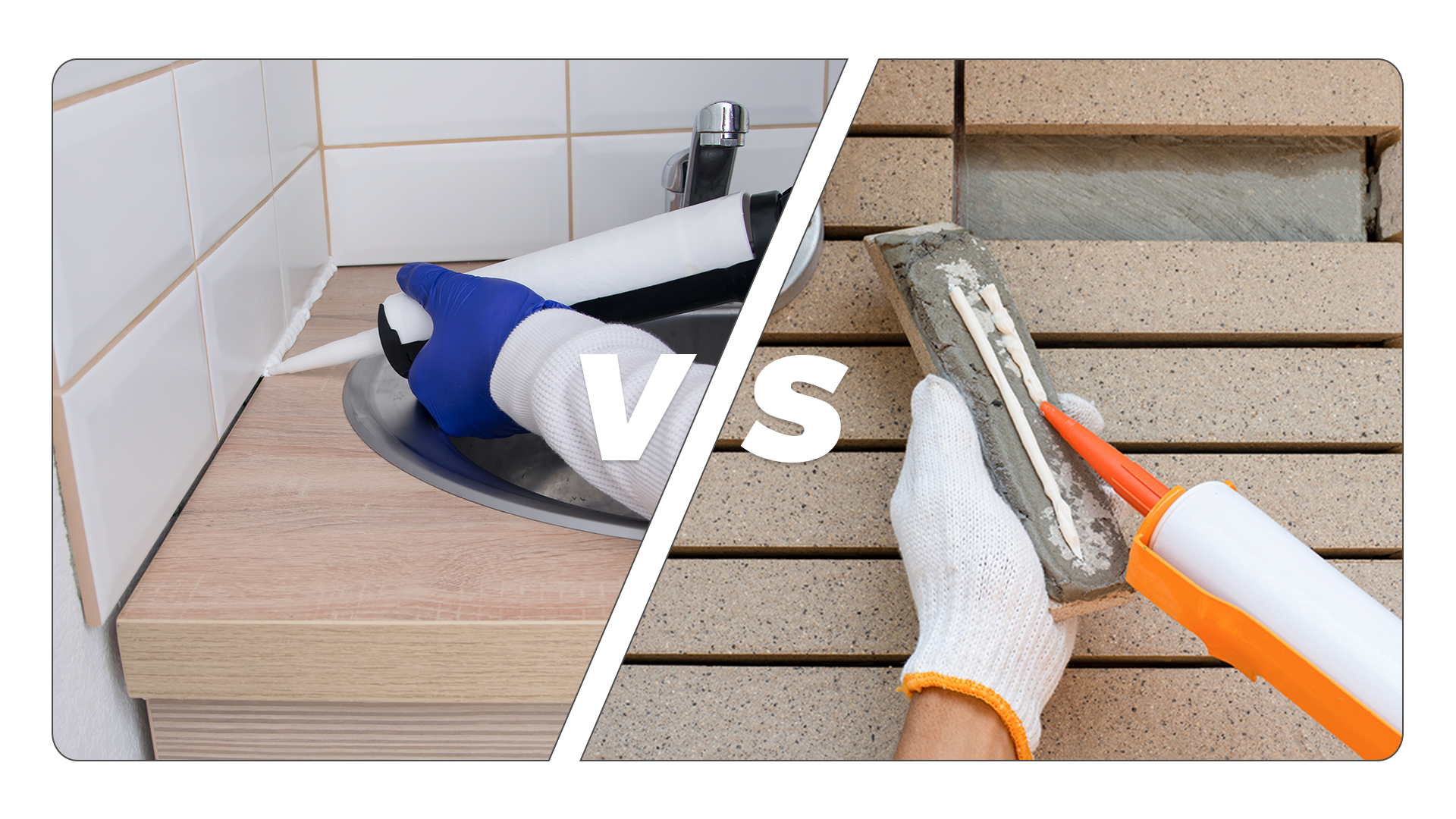Adhesives and sealants are two secret tools hiding in plain sight. When you see a wall holding together or a window sealed tight, chances are one of these tools did the job. Many people confuse them because they look alike in the tube. But in truth, one locks materials together, and the other blocks air or water from slipping through. Let’s look at the clear differences between these two helpers so your next project won’t be a guessing game.
Adhesives join two materials together. They hold parts in place for a long time. Some examples are glue, epoxy, and tape.
Sealants block gaps between two surfaces. They stop air, water, dust, or other things from passing through. Common sealants include silicone, acrylic, and polyurethane.
Curing is how adhesives or sealants become strong after use.
Each has special features. The chart below shows the main differences.
| Property | Adhesives | Sealants |
|---|---|---|
| Bond Strength | High (can exceed 1,000 psi) | Low to Medium (usually < 300 psi) |
| Flexibility | Low to Medium | High |
| Hardness (Shore A/D) | Often harder after curing | Usually soft and rubbery |
| Elongation (Stretch) | Low (less than 10%) | High (up to 400%) |
| Thickness When Applied | Thin layer | Thick layer |
| Appearance After Curing | Clear, hard, thin | Soft, elastic, may be visible |
| Resistance to Movement | Poor | Good |
| Gap Filling Ability | Limited | Excellent |
| Wear Resistance | High (for industrial adhesives) | Low to Medium |
Sealants often stay soft and flexible, even after drying. This helps them handle movement, like expansion or shrinkage in joints. Adhesives, on the other hand, become stiff and strong.
.png)
The chemical side is also different. See the table for details.
| Property | Adhesives | Sealants |
|---|---|---|
| Main Chemical Types | Epoxy, cyanoacrylate, polyurethane | Silicone, acrylic, polysulfide |
| Crosslinking (Chemical Bonds) | Strong crosslinks (thermosets) | Light crosslinks or none |
| Moisture Sensitivity | Some are moisture sensitive | Many cure with moisture |
| Resistance to UV | Medium to high (depends on type) | High (especially silicone) |
| Chemical Resistance | Good (varies by type) | Moderate to good |
| Aging and Durability | Long-term stability | Long-lasting, but flexible |
| Shrinkage After Curing | Low | Medium to high |
| Volatile Organic Compounds | Often low (in modern formulas) | Can be high in some sealants |
Sealants often use flexible chemical chains. These chains allow stretching and bending. Adhesives, in contrast, often use hard and rigid chemical bonds.
They are used in different ways. The table below shows where each one works best.
| Use Area | Adhesives | Sealants |
|---|---|---|
| Home Repair | Gluing broken items, furniture repair | Sealing windows, bathtubs, or sinks |
| Automotive | Bonding metal panels, fixing parts | Sealing windshields, doors, and joints |
| Construction | Bonding tiles, flooring, or panels | Sealing building joints and expansion gaps |
| Electronics | Mounting components on boards | Protecting circuit gaps from moisture |
| Packaging | Closing boxes, labels | Sealing lids or keeping containers airtight |
| Aerospace | Structural bonding of parts | Filling gaps to avoid air leaks |
| Marine | Fixing parts in boats | Sealing hulls or decks |
Each product works best when used correctly. Using an adhesive where a sealant is needed can lead to leaks. Using a sealant instead of an adhesive can lead to weak bonds.

No two jobs are the same. Some need a firm grip, while others need a watertight seal. Adhesives and sealants each have their role to play. Pick the wrong one, and you might face leaks or weak joints. Pick the right one, and your work stays solid and safe. Knowing the difference is the key to getting the job done right.
Q1: Can I use adhesives and sealants together?
Yes. Adhesives stick parts together. Sealants fill gaps and stop water or air. Some jobs need both. Use the right ones together, but always check the labels to be sure.
Q2: Are adhesives stronger than sealants?
Yes. Adhesives hold parts very tight. Sealants are softer and more flexible. Sealants cannot hold parts together in heavy jobs.
Q3: Can I paint over adhesives and sealants?
Some can be painted over, but not all. Acrylic sealants are easy to paint. Silicone sealants are hard to paint. Some adhesives can hold paint. Always check the label first.
Q4: What’s the difference between silicone and acrylic sealants?
Silicone sealants stay soft and flexible for years. They are good for wet areas like bathrooms and outdoors. Acrylic sealants dry fast and are easy to paint. They work well indoors but do not resist water as well.
Q5: Can adhesive be used as sealant?
No. Adhesives are for sticking parts. Sealants fill gaps and move with the material. Adhesives can break if used like a sealant.
Q6: What is the difference between adhesive and sealant?
Adhesives stick things together strongly. Sealants fill spaces and keep out air, water, and dust. Sealants can move a bit when the material moves.